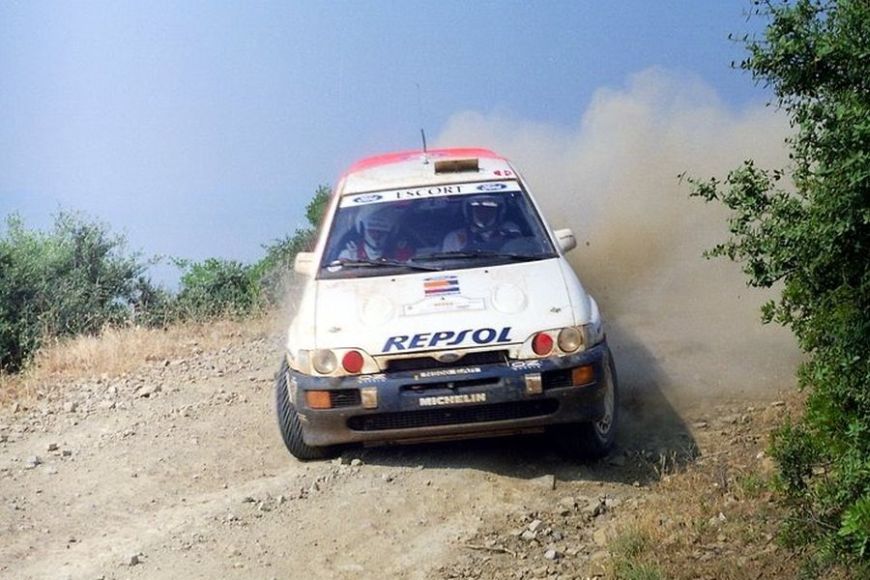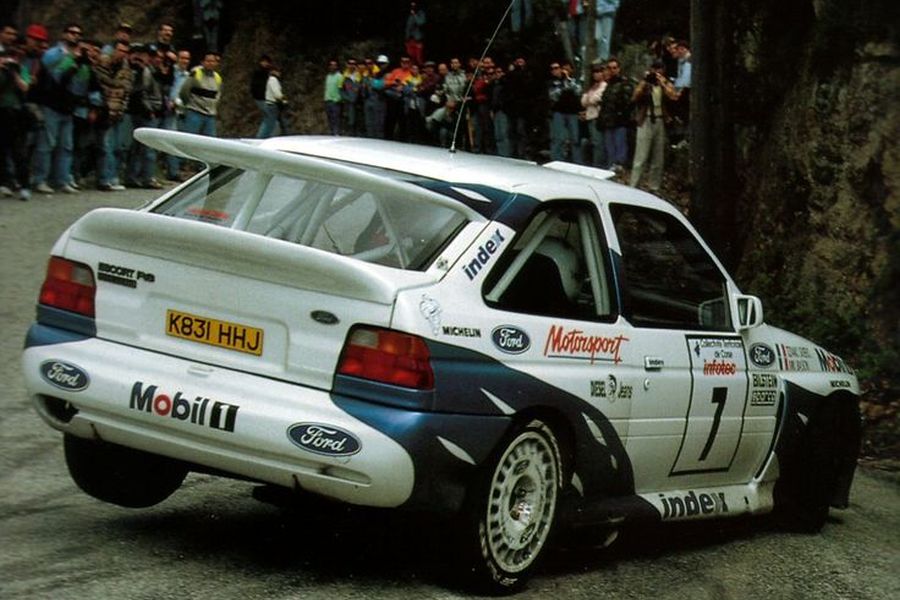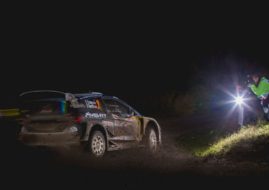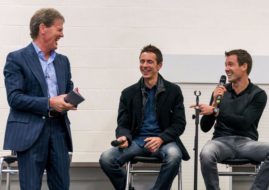Ford Escort RS Cosworth - Not So Successful But The Most Popular
Ford Escort RS Cosworth is a rally car which was in use by Ford’s factory team in the World Rally Championship between 1993 and 1998. In 1997, Escort RS Cosworth was converted and renamed into Escort WRC, being in use for two more seasons before the Focus RS WRC was introduced in 1999. Escort RS Cosworth scored eight WRC wins, Escort WRC added two more wins.
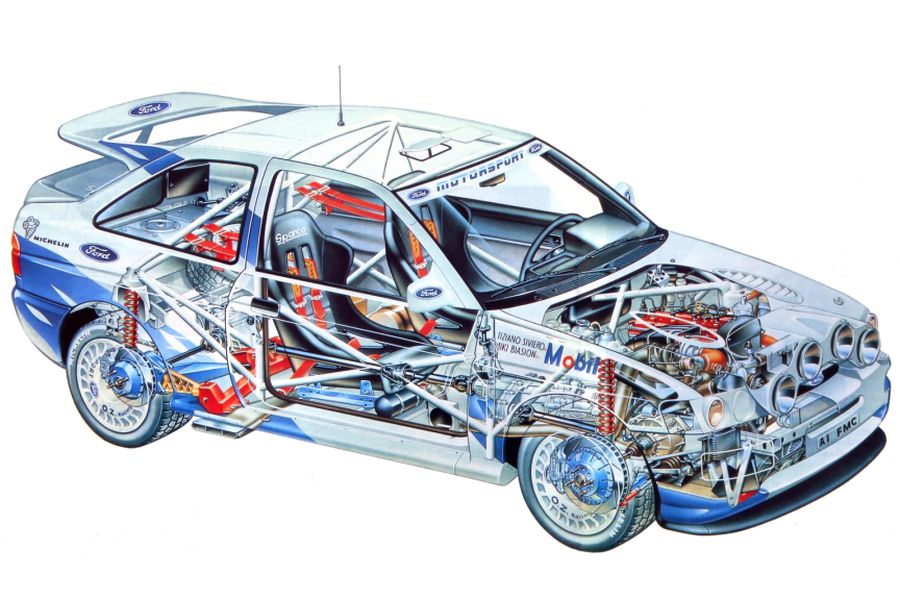
Ford Escort RS Cosworth
Escort RS Cosworth succeeded Sierra RS Cosworth
In the late 1980s and early 1990s, Ford was running the Sierra RS Cosworth in the World Rally Championship, first the rear-wheel-drive car since 1987 and then introducing the 4×4 version in 1990. In 1989, a development of Sierra’s successor started. The Escort RS Cosworth was based on the fifth generation of Escort, introduced in 1990.
Up to 350 hp in the Group A rally car
To homologate a Group A rally car, Ford had to produce 2500 so called ‘homologation specials’, a sporty version of road cars. A road-going version of Escort RS Cosworth was developed around the chassis and other mechanical components of its predecessor Sierra, to accommodate the larger 2.0-litre Cosworth engine and five-speed transmission. In a rally car, the seven-speed gearbox was in use.
The power output of road-legal car was about 230 hp. A Group A rally car has a 34mm turbo restrictor and a limitation of 300 horse powers, although some stories tell that some engine modifications could increase a power, without touching a turbo, to 350 hp.
Recognizable double rear spoiler
Escort RS Cosworth was designed by Rod Mansfield and John Wheeler from Ford’s SVO (Special Vehicle Operations) department but the most notable part, a large double rear spoiler, was added by Frank Stephenson. The cars were manufactured in Karmann’s facility in Rheine, Germany.
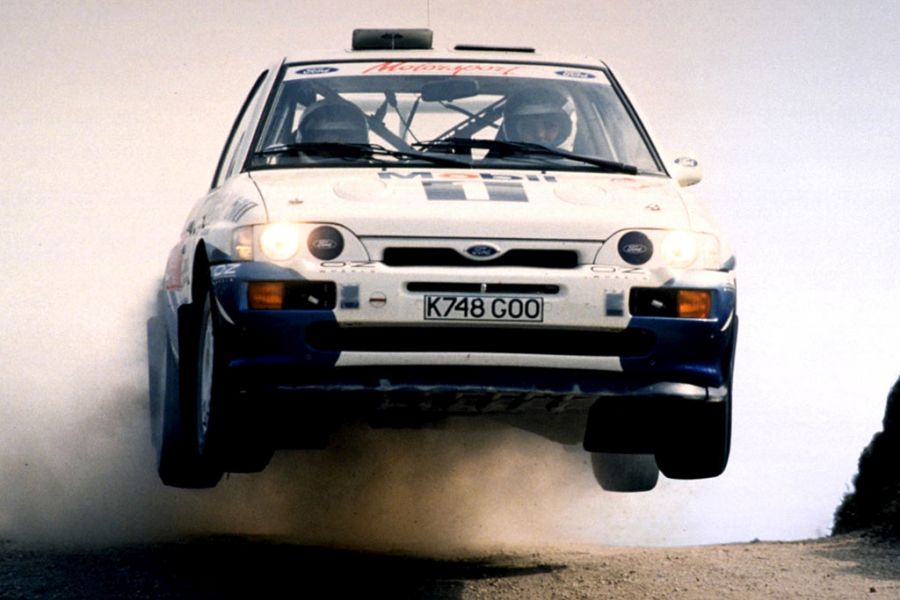
Escort RS Cosworth was successful even before debuting in WRC
Developing a car through rally events
Before debuting in the World Rally Championship, Escort RS Cosworth underwent extensive tests, including participation in rally events. Spanish rally driver Josep Mario Bardolet was a first test driver, using an Escort RS Cosworth in the 1992 Spanish Rally Championship, winning two events and finishing second in the points.
The main development driver was Ford’s factory driver Malcolm Wilson, who participated at 1992 Scottish Rally as a course car driver, setting faster stage times than rally winner Colin McRae with Subaru Legacy RS. In the second part of 1992 season, Ford’s drivers Francois Delecour and Miki Biasion turned their focus to developing a new car for the next season.
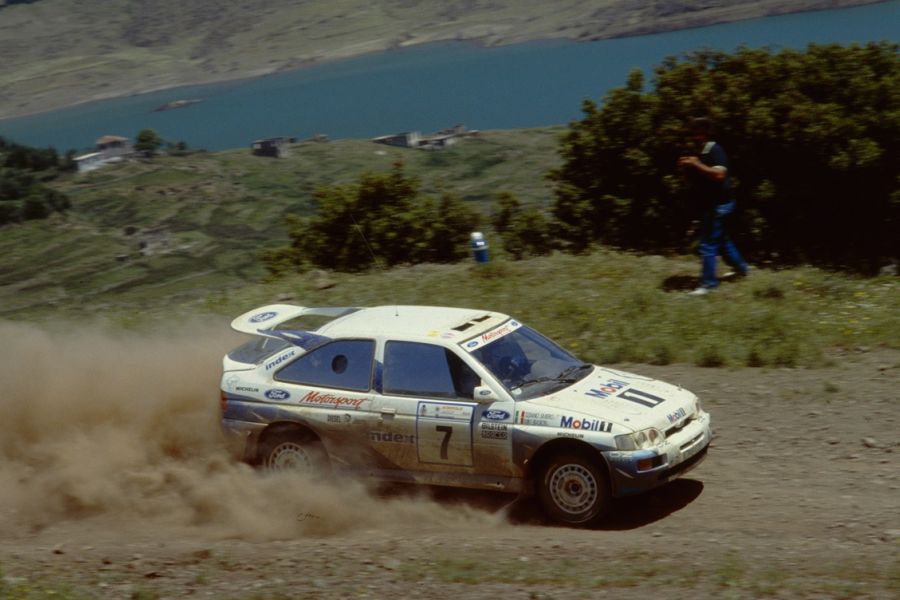
Miki Biasion’s Ford Escort at 1993 Acropolis Rally
Double podium in WRC debut at Rallye Monte Carlo
Delecour and Biasion remained Ford’s leading drivers in the 1993 WRC season, debuting with Escort RS Cosworth at Rallye Monte-Carlo. Delecour was in the lead, with Biasion second, until the last day, when Toyota’s Didier Auriol triumphed ahead of two Ford drivers.
Malcolm Wilson had WRC debut with Escort RS Cosworth at Swedish Rally, being in the lead until an accident. A new car showed its potential and it was a matter of time when the first WRC win will come.
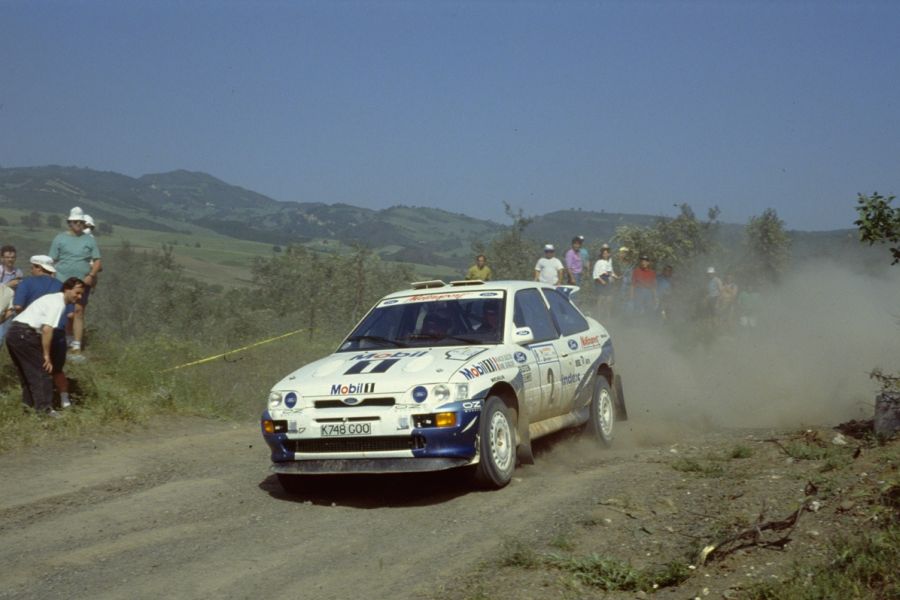
Francois Delecour scored four WRC wins driving Ford Escort RS Cosworth
Maiden WRC victory at 1993 Rally Portugal
The first WRC victory came in the third championship round, at Rally Portugal, where Francois Delecour won the event ahead of teammate Miki Biasion. After skipping Safari Rally, Delecour was the winner again at Tour de Corse. In the next round, the Acropolis Rally, Miki Biasion finally scored a victory, his first after three years.
Second place both in the manufacturers’ and drivers’ standings
After that event, Ford was leading in the manufacturers’ standings but the results in the second part of the season secured a title for Toyota. Delecour scored one more win (Catalunya ) and two podiums, finishing second in the drivers’ championship behind Toyota’s Juha Kankkunen.
The biggest surprise during the 1993 season was a victory of Italian driver Gianfranco Cunico at Rallye Sanremo, in the privately-entered Ford Escort RS Cosworth. The second-placed driver Patrick Snijers was also a privateer in another Escort RS Cosworth.
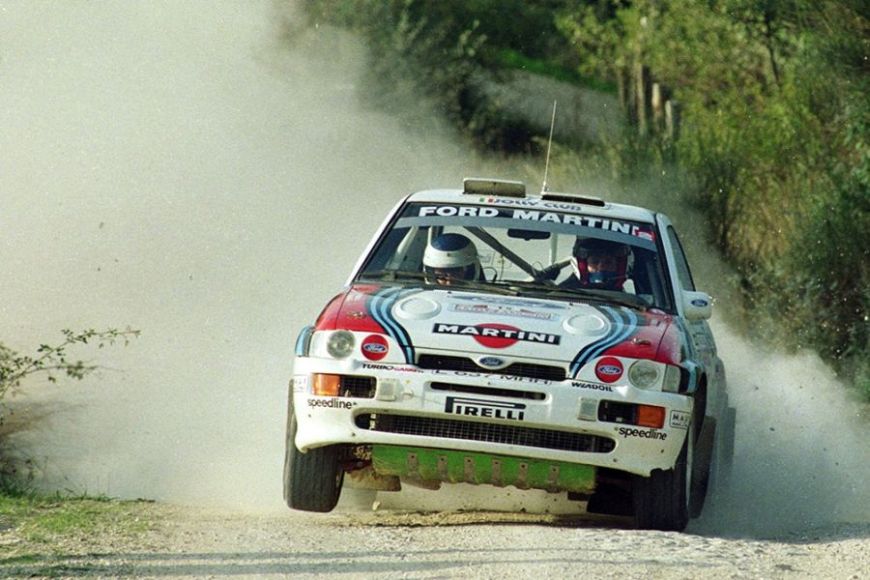
Malcolm Wilson’s Ford Escort RS Cosworth
1994 British and European titles for Escort RS Cosworth
Malcolm Wilson participated in three WRC events in 1993, finishing best in the third place at RAC Rally. During a season, he was more concentrated on the British Rally Championship, finishing in the second place behind Subaru’s Richard Burns. In 1994, Wilson continued to combine WRC and BRC. Sixth place at Acropolis Rally was his best WRC result but in the British championship, he reached a top, winning a title with four rally wins.
Belgian driver Patrick Snijers was also successful with Escort RS Cosworth, winning two Belgian championships (1993, 1994) and conquering European Rally Championship in 1994.

Ford Escort RS Cosworth in 1994
Two wins in the 1994 WRC season
The 1994 World Rally Championship started with Francois Delecour‘s victory at Rallye Monte-Carlo but it was all he did that year. He retired in the next event, in Portugal, and after that he was injured in a road accident, missing next four rallies.
Without Delecour, Ford lost a chance to fight for the manufacturers’ title. During a season, drivers were changing in Ford’s team, with Bruno Thiry, Malcolm Wilson, Ari Vatanen or Franco Cunico in the cockpit of Escort. Tommi Makinen participated as a guest driver at 1000 Lakes Rally, scoring his maiden WRC victory in a career.
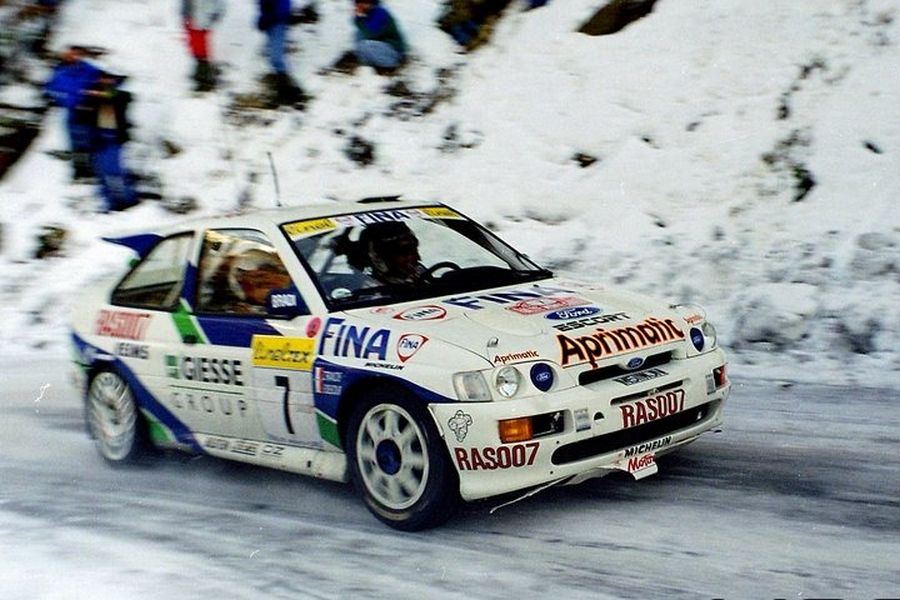
The season 1995 was winless year for Ford
No wins in 1995 WRC season
Ford closed its works team at the end of 1994, handing over its rally programme to the Belgian RAS Sport. Belgian driver Bruno Thiry was one of two main drivers, with Francois Delecour staying with Ford for one more season.
Delecour started a season with second place at Rallye Monte-Carlo, adding one more podium at Tour de Corse later in a season. Thiry didn’t score any podium and Ford finished a season in the last place among manufacturers.
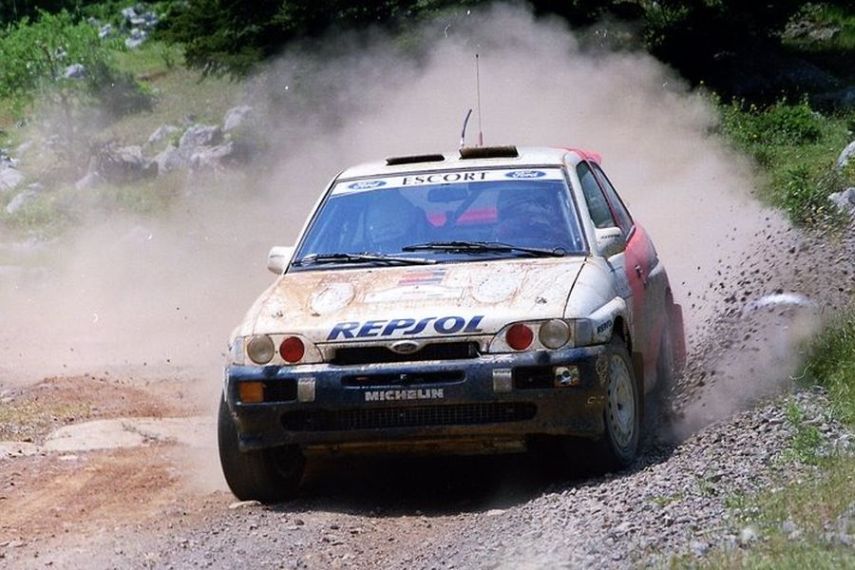
Carlos Sainz’s Ford Escort RS Cosworth at 1996 Acropolis Rally
Carlos Sainz brought the last victory for Escort RS Cosworth
After an unsuccessful experiment with RAS Sport, Ford took back its rally team under its own roof for the 1996 WRC season. Carlos Sainz joined the team as leading driver in the #4 Ford Escort RS Cosworth. Francois Delecour participated at season-opening Swedish Rally only, leaving a team after that. Stig Blomqvist and Gwyndaf Evans competed in the #5 car before Bruno Thiry took over until the end of the season.
Carlos Sainz scored the last WRC victory for Ford Escort RS Cosworth, winning the Rally Indonesia in May. He scored five more podiums to finish third in the championship, behind Tommi Makinen and Colin McRae. Bruno Thiry was the last to score a WRC podium with Escort RS Cosworth, finishing third at Rally Catalunya.
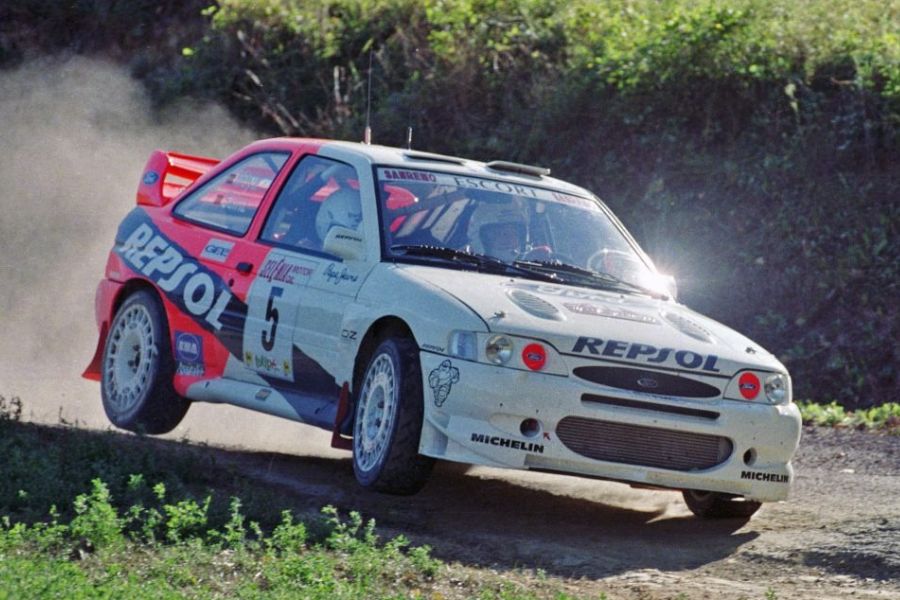
Ford Escort WRC in 1997
Escort RS Cosworth became the Escort WRC
The new World Rally Car rules were adopted for the 1997 WRC season. Ford converted its Escort RS Cosworth to Escort WRC, as a transitional solution before an introduction on purpose-built Focus RS WRC in 1999. Malcolm Wilson took over Ford’s rally programme, retaining Carlos Sainz in the team. Armin Schwarz was the second driver in six events after that Juha Kankkunen came. Sainz scored two wins with Escort WRC, at Acropolis Rally and Rally Indonesia.
Three decades of Ford Escort in rallying
Escort WRC participated in the WRC until the end of 1998, with Juha Kankkunen, Bruno Thiry and Ari Vatanen as Ford’s driver that year. In the last championship round, at 1998 Rally GB, Kankkunen finished second and Thiry was third. That double podium was the last appearance of Escort name in the world rallying, thirty years after the Ford Escort MkI debuted in rallying. After being replaced in the WRC, Escort RS Cosworth continued to live for many more years in many other rally competitions and other motorsport disciplines, especially in the hillclimb races, becoming one of the most popular racing Fords.
Ford Escort RS technical specifications
| Chassis | Steel monocoque chassis with roll-cage |
| Length | 4,211 mm |
| Width | 1,742 mm |
| Height | 1,425 mm |
| Wheelbase | 2,552 mm |
| Track | front: 1,490 mmrear: 1,505 mm |
| Weight | 1,220 kg |
| Engine | Cosworth YBT 4-cylinder 1994 ccm, turbo charged |
| Power/torque | 310 hp/450 Nm |
| Transmission | Permanent four-wheel drive |
| Gearbox | 7-speed manualsince 1995: 6-speed sequential |
| Front suspension | Macpherson strut with lower transverse arms and stabilizer, coil springs and telescopic gas shock absorber |
| Rear suspension | Trailing/semi-trailing arm, coil springs, telescopic gas shock absorber and anti-roll bar |
| Brakes | Front and rear: ventilated discs 270-380mm and 4/6/8 aluminium piston calipers |
| Wheels | Gravel: 7"-8"x16"-17"tarmac: 8"-9"x17" |
| Tires | Pirelli P Zero 225/45ZR16 or Michelin 210/610-18" |
Photos: ewrc-results.com,


